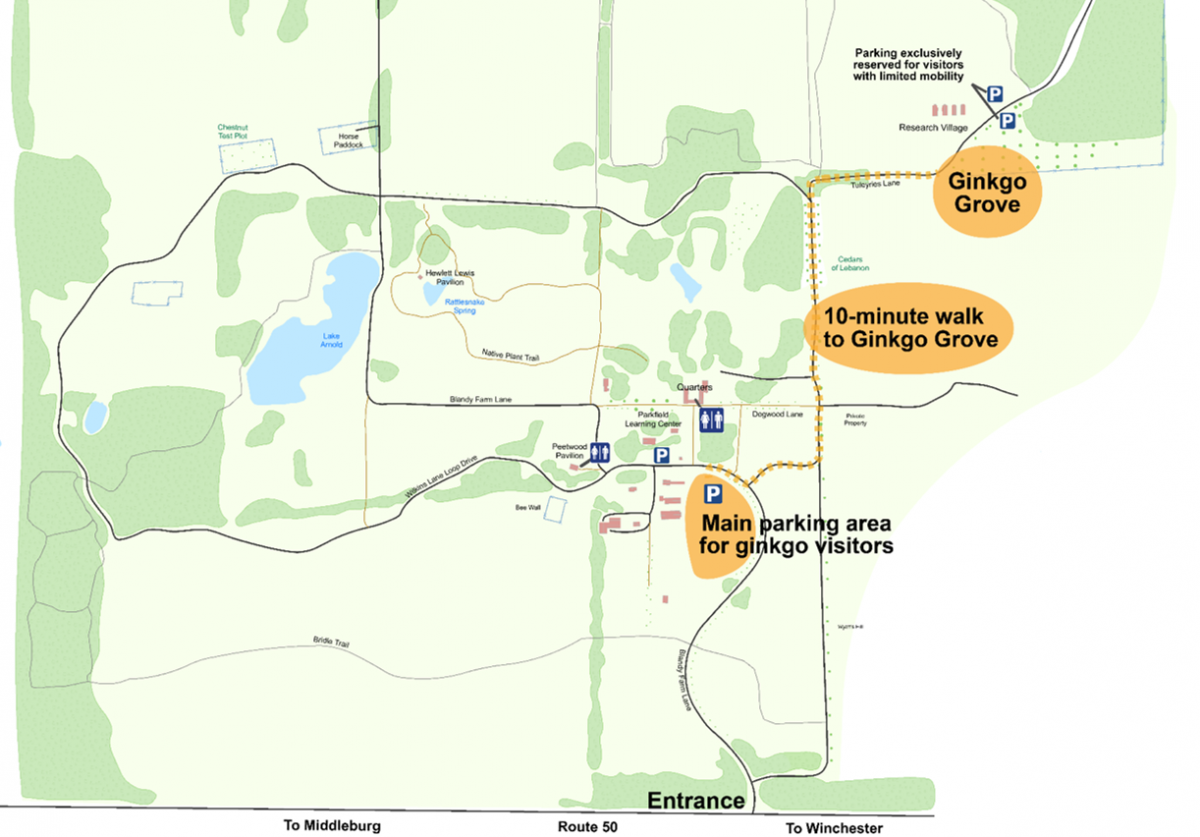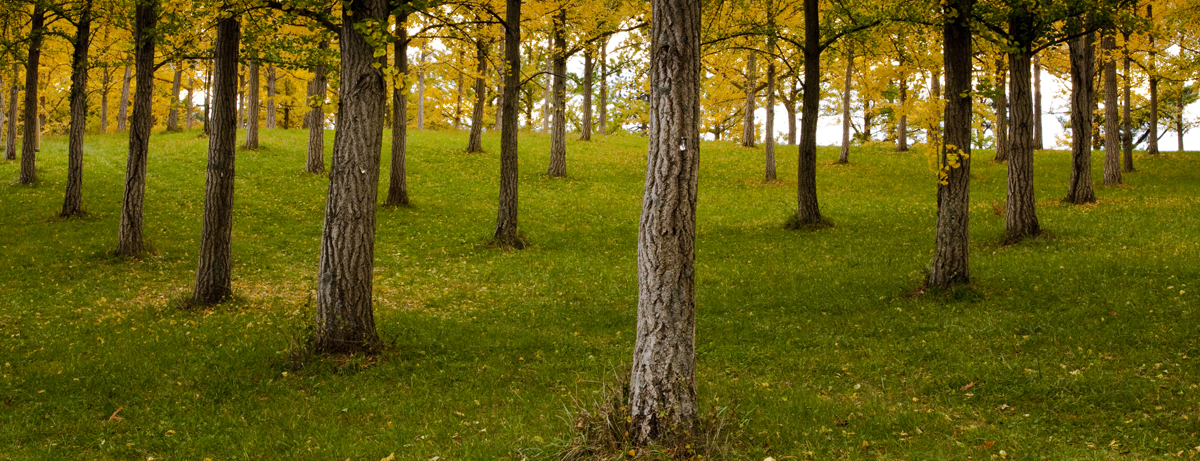FALL 2021 GINKGO INFO

GINKGO FAQS: PLANNING YOUR VISIT TO THE GINKGO GROVE
WHAT'S SO SPECIAL ABOUT BLANDY'S GINKGO GROVE?
With over 300 trees, Blandy's Ginkgo Grove is one of the largest public ginkgo groves in America. You can learn more about the Grove in our new brochure!
WHEN IS THE BEST TIME TO VISIT THE GINKGO GROVE?
Although there is some variation from year to year, late October or early November is usually the best time to see glorious golden ginkgoes at Blandy. We’ll be posting regular updates about the state of the Grove on this page and on our social media pages.
The Ginkgo Grove tends to be busiest on weekends in late October and early November. For a quieter ginkgo experience, we recommend visiting on a weekday or early in the morning. Blandy is open to the public every day from dawn to dusk.
WHERE SHOULD I PARK?
Due to the large number of people visiting the Ginkgo Grove October-November, we strongly encourage visitors to park in one of the lots near the Quarters building and enjoy the scenic, 10-minute walk to the Grove. Here is a map showing the parking area and walking route. There are only a small number of public parking spaces at the Ginkgo Grove, and these spaces are exclusively reserved for visitors with limited mobility. To reduce vehicle traffic near the Grove and protect tree roots from soil compaction, parking along the side of the road near the Ginkgo Grove is not permitted.

CAN TOUR BUSES DRIVE TO THE GINKGO GROVE?
No. Buses are not allowed to drive through Blandy’s grounds due to sharp turns and low-hanging tree branches. Buses must park in the front field parking lot near the Quarters building. Enter Blandy from the Route 50 entrance, then turn left into the parking lot at the "Bus & Visitor Parking" sign.
ARE RESTROOMS AVAILABLE AT THE GINKGO GROVE?
There are no public restrooms at the Ginkgo Grove. The only public restrooms at Blandy are located at the Quarters building and at Peetwood Pavilion (map with restrooms shown).
IS IT FREE TO SEE THE GINKGOES?
Yes! There is no admission fee to enter Blandy Experimental Farm/The State Arboretum of Virginia or to see the ginkgoes. Donations can be made here (Online Payments/Donations) to help maintain our grounds and to support our mission of environmental research and education.
ARE THERE ANY SPECIAL GINKGO EVENTS HAPPENING AT BLANDY THIS FALL?
Yes! Click here to read more about Ginkgofest!
WHERE CAN I LEARN MORE ABOUT GINKGOES?
There are lots of great resources out there, but this virtual seminar Blandy faculty and staff gave for UVA's Lifetime Learning group might be a good place to start.
WHY DOES BLANDY HAVE A GINKGO GROVE?
We can enjoy the Ginkgo Grove today thanks to a scientific experiment dating back to the 1930s and 1940s. Ginkgoes have separate male and female trees. Dr. Orland E. White, Blandy Experimental Farm’s first Director, wanted to know what proportion of a gingko’s seeds will develop into male vs. female trees. To test this question, Dr. White and his students planted an experimental ginkgo orchard at Blandy using seeds collected from a tree of the Grounds of the University of Virginia in Charlottesville. Because ginkgoes can take 20 years to reach sexual maturity, Dr. White did not live long enough to see the “fruits” of his labor and discover the answer to his question. When the final tally was made in the 1980s, 157 trees were female and 144 were male- a roughly 1:1 male:female sex ratio.
MAY I COLLECT LEAVES/FRUIT/BRANCHES AT THE GINKGO GROVE TO TAKE HOME?
No. There is a “no collecting” policy at Blandy to protect natural resources for wildlife and for the enjoyment of future visitors.
DO YOU SELL GINKGO SEEDLINGS?
Not at this time.
MAY I FLY MY DRONE OVER THE GINKGO GROVE?
No. Drones are prohibited at Blandy.

